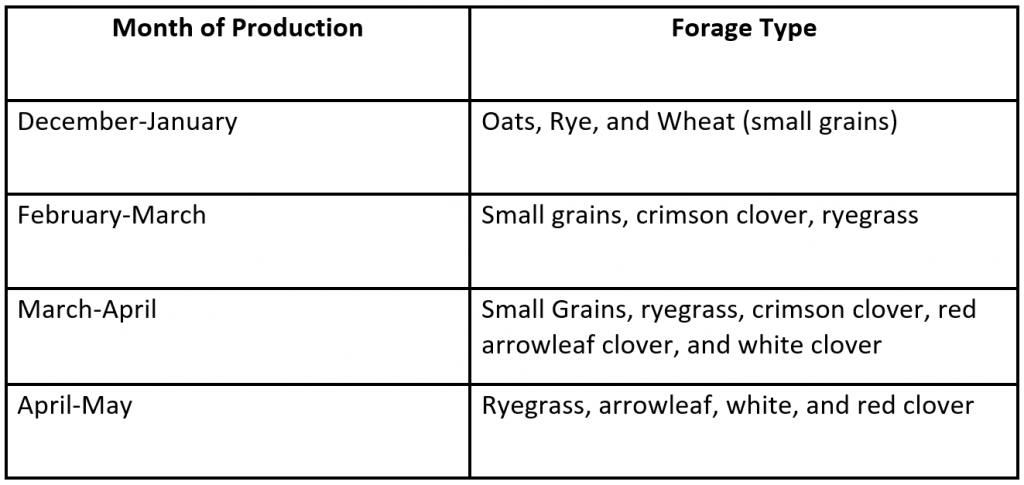What are you going to feed this winter?
Bahia and Bermuda grass are our most predominant pasture grasses in Florida which allows for plenty of warm season forage but leaves us short during winter. The solution? Over-seeding pastures with cool season annuals that will produce forage while perennials lay dormant. Forage produced by cool-season grasses during winter months offer a grazing option for our livestock versus purchasing & feeding hay.
Cool-season annuals are the answer to feed shortage during the winter.
The first step to planting cool-season forages is determining when your pastures are least active. Choose a cool season forage that is most productive when warm seasons in your pasture are dormant. If your pastures are least productive during December or January then you might choose to plant small grain rye. If your pastures are less active during the spring months you may choose ryegrass or a clover. Dormancy of a pasture can be dependent on the grass cultivar like UF Riata, TifQuick, etc. or based on the climate in your area. Different cool seasons may pair better with different warm seasons, make sure to research what will work best in your pasture.
Cool Season Forage Production Months
Planting Cool Season Forages.
After deciding which cool season forage you are going to plant, it is time to actually plant it. Cool season forages are generally planted during the fall. Conventional tillage, hand seeding, or a no-till drill are used to over-seed. Find the seeding dates and rates in the table below:

The cost of over-seeding can be compared to the money saved on purchasing hay for livestock. Often it can be cheaper than providing hay/grain. If equipment is readily available then the only cost you incur is of the seed.
Additional Resources:
http://bit.ly/OverseedingPasture
http://bit.ly/OverseedingExplanation
http://bit.ly/CoolSeasonForageVariety
 0
0

